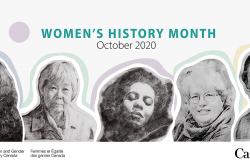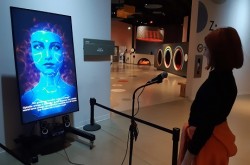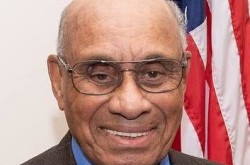Museum visitors take an inter-planetary adventure with virtual reality technology

If you’ve ever dreamed of exploring a distant planet, now’s your chance – and you don’t even have to leave Ottawa to do it.
This spring, the public is invited to test-drive a virtual reality application at the Canada Aviation and Space Museum. The application – called Minerva Prime – is being developed by a group of students from Algonquin College.
Dushan Horvat, the professor for the Game Development class working on Minerva Prime, explains the application’s theme.
“Humankind has already colonized an exoplanet and there are several different colonies,” says Horvat. “Some specialize in mining, some have a military outfit, some are there just to do research in science; your particular crew is with one of the colonies that are primarily research scientists.”
A multi-player adventure, Minerva Prime allows users to choose the role of driver, navigator/pilot, or scientist/engineer. As you work together and train as a team, you eventually move into complex missions to resolve goals – while learning and employing scientific and engineering processes.
From April to June, museum visitors are invited to participate in public demonstrations of Minerva Prime on Friday, Saturday and Sunday afternoons (please contact the museum for details).
“People are invited to put on the VR kits and play around in our world,” says Casandra Bouchat-Laird, a third-year student in Algonquin’s Game Development program. “Visitors are welcome to ask us about the game, about game development – they can watch us work and see what the process is.”
Bouchat-Laird is the lead artist for Minerva Prime, and is responsible for creating the 3D models within the application as well as overseeing other artists on the team. She says the visitor response to Minerva Prime has been extremely positive so far.
“A lot of people have never used VR before, so as soon as they get wind that they can put on this headset and be in a different world they’re so excited to try it,” she enthuses, adding that it’s appropriate for kids ages six and up. “Kids love it; my favourite part is teaching the kids – they’re mind-blown.”
The student developers have also had the chance to discuss the Game Development program with kids who are interested in pursuing the field as a career.
“There was this one 14-year-old kid – he’s already coding and he came in and asked me dozens of questions,” says Bouchat-Laird. “I thought it was great; I gave him advice on things and I talked to his mom and said, ‘That’s a game developer.’
“That’s really rewarding for us – to see these people seeing what we’re doing and they like it; they want to do it and they want to ask us questions.”
For the museum, this partnership brings to life a vision for creating a collaborative research hub.
“These students are helping us to turn the museum’s Bush Theatre into a living lab,” says Chris Kitzan, director of the Canada Aviation and Space Museum. “Showcasing emerging technologies enhances the museum experience for our guests – and offers a transparent development area where industry, government, and the public can engage with the developers and learn about the process and complexities of game/simulation development.”
While Minerva Prime is designed for adventure, it strongly incorporates STEM academic disciplines (Science, Technology, Engineering, and Mathematics) in several player missions.
“If somebody wanted to learn more about science, they could pick certain missions and those have heavy tutuorial aspects,” explains Horvat. “They kindof teach you as you go; then there’s also a more advanced mode that teaches you nothing – you actually have to know what you’re doing.”
Horvat says the Minerva Prime application is expected to be completed sometime next year. Until then, museum visitors have a unique opportunity to get a glimpse into the creative world of virtual reality and game development.
“The whole project in the lab is for people to watch something happen in transition,” he says. “Whether they’re people from aerospace companies, the public, or government officials – normally they wouldn’t have access to see something like this.”
































































